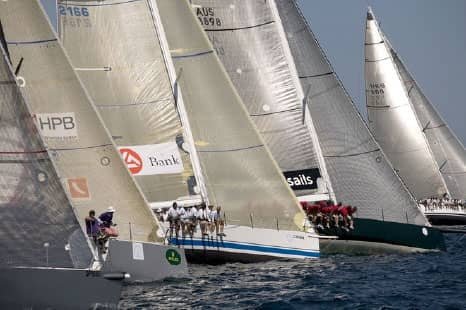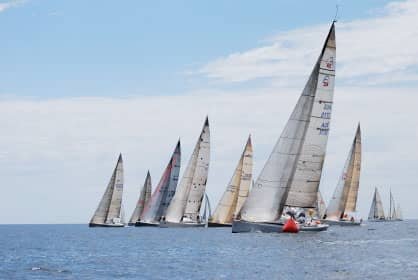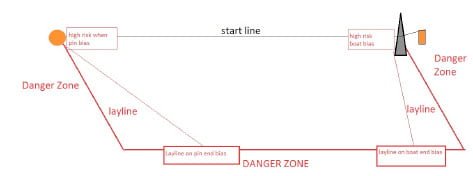Discipline is paramount in implementing a total starting strategy for each and every boat race. Without a sound understanding of the procedure by every team member on a boat, and allowing time to gather information before the start of every race, your chances of making well calculated decisions are substantially reduced.
Many different sailors and teams have their own ideas and plans for the start of the race. The guide outlined here is a system that works well for me and you may find that modifying this works better for you – but the only way to establish this is to start practicing and sticking to a plan from the outset.
The learning can only begin when you start!.

1. WEATHER
2. BOAT
3. TEAM
4. OPPOSITION
5. GEOGRAPHY
6. LAY LINES
7. STRATEGY
8. PLAN
1. TWD
2. LINE ANGLE
3. LINE LENGTH
4. BIAS
5. LAYLINES
6. DANGER

The Next Factor (to windward) shortly after the gun - it’s clear to see the advantage of the biased end and a front row

Using the information gathered establish the starting boundaries and reduce the risk of getting a bad start

Identify the high risk zones when the line is biased - these areas can often result in chaos and crashes. It may be worth starting near the favored end, but just clear of the commotion!
5 MINUTES
4 MINUTES
3 MINUTES
2 MINUTES
1 MINUTE
1. BAD START
2. OCS (individual)
3. GENERAL RECALL
4. BLACK FLAG
Signup our newsletter to get updates, information, news, insight or promotions: